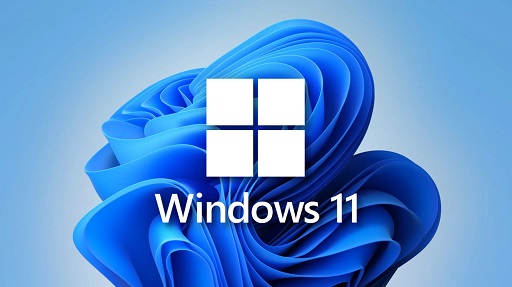Microsoft has confirmed that support for Windows 10 will officially end on October 14 2025. While that might sound like a long way off, the reality is that businesses should be planning their next steps now. For small businesses, this change has serious implications for security, compliance, and productivity.
If your business still relies on Windows 10 devices, here’s what you need to know—and why upgrading to Windows 11 should be on your radar.
What Does “End of Support” Mean?
When Microsoft ends support for an operating system, it no longer receives:
- Security updates and patches – Without these, systems are exposed to new threats.
-
Bug fixes and performance improvements – Any glitches, stability issues, or software conflicts will remain unresolved.
- Technical support from Microsoft – If something goes wrong, you won’t be able to rely on Microsoft’s help.
For a business, this means running Windows 10 beyond its end date leaves your technology environment increasingly vulnerable, with risks escalating month by month.
Why It Matters for Small Businesses
Small businesses are often targeted by cybercriminals precisely because they’re seen as easier targets than large corporations. An unsupported operating system magnifies this risk.
-
Cybersecurity risks: Hackers actively look for unpatched systems. Once Windows 10 is unsupported, it becomes a prime target
for malware, ransomware, and phishing campaigns.
-
Compliance concerns: Many industries—law, finance, healthcare—require systems to be up-to-date as part of regulatory
compliance. Using unsupported software could put your business at risk of fines or insurance issues.
-
Software compatibility: Over time, new applications and updates from other software vendors won’t support Windows 10. This
leads to workflow disruptions and outdated tools.
In short: staying on Windows 10 may save costs in the short term, but it creates significant risks and hidden expenses in the long run.
Why Upgrade to Windows 11?
Windows 11 isn’t just a cosmetic update—it introduces important features that make it a smart investment for business.
-
Enhanced Security: Windows 11 requires more modern hardware with built-in security features such as TPM 2.0 (Trusted
Platform Module), Secure
 Boot, and stronger protection against malware.
Boot, and stronger protection against malware.
-
Improved Productivity: Features like Snap Layouts, improved virtual desktops, and integrated Microsoft Teams support make
multitasking and collaboration easier.
-
Longer Support Lifecycle: Windows 11 will continue to receive updates and patches for years to come, ensuring your business
stays secure and supported.
-
Compatibility with modern apps: As software vendors move forward, new versions of business tools are optimised for Windows
11.
What If Your Devices Can’t Run Windows 11?
Not all existing PCs are compatible with Windows 11. The key requirements include:
- TPM 2.0 and Secure Boot support
- A compatible CPU (8th Gen Intel or newer, AMD Ryzen 2000 series or newer)
- At least 4 GB of RAM and 64 GB of storage
If your devices don’t meet these requirements, you’ll need to consider:
-
Upgrading hardware: New business-grade PCs often come with stronger performance, energy efficiency, and warranty options.
-
Exploring alternatives: Some businesses may use this opportunity to review whether cloud-based or virtual desktop solutions
could better fit their needs.
While upgrading hardware involves upfront costs, it also provides long-term benefits in terms of reliability, speed, and support.
Planning Ahead: Steps to Take Now
Now is the time to prepare. Here’s a roadmap we have put together to help your transition to Windows 11:
-
Audit your devices – Identify which machines are running Windows 10 and whether they’re compatible with Windows 11.
-
Check application compatibility – Ensure your line-of-business and mission-critical software works on Windows 11 before
upgrading.
- Budget for upgrades – Factor in both software licensing and hardware replacement where necessary.
-
Plan the migration – Schedule upgrades to minimise downtime. Rolling out Windows 11 in stages helps staff adapt more
easily.
-
Provide training – Windows 11 looks and feels a little different. Training your staff ensures productivity isn’t lost
during the transition.
The Security Implications of Doing Nothing

Some businesses will continue using Windows 10 after support ends, thinking “it will be fine.” Unfortunately, history shows otherwise:
- Windows XP and Windows 7 both became hot targets for cybercriminals after support ended.
- Attackers often build exploits specifically for unsupported systems, knowing they’ll never be patched.
-
Businesses that suffer a data breach not only face recovery costs, but also reputational damage and potential regulatory penalties.
By acting early, you can avoid these risks and ensure your business is positioned for secure, stable growth.
Final Thoughts
Running an unsupported system puts your company at risk, while upgrading ensures ongoing security, compliance, and productivity.
Windows 11 has matured significantly since its launch, offering stability, better performance, and modern security features. But remember: before upgrading, confirm that your essential business applications are compatible to avoid disruption.
If your devices are compatible, moving to Windows 11 is the best path forward. If they’re not, it’s an opportunity to refresh your hardware and strengthen your IT foundation.
The key is to start planning now, rather than waiting until the last minute. By taking proactive steps, your business can turn this transition into an opportunity to modernise, streamline, and secure your technology environment.
If you’d like help auditing your current devices, checking application compatibility, or planning your Windows 11 upgrade, get in touch with our team today. We can guide you through every step to make sure your business stays secure and productive.
 Boot, and stronger protection against malware.
Boot, and stronger protection against malware.